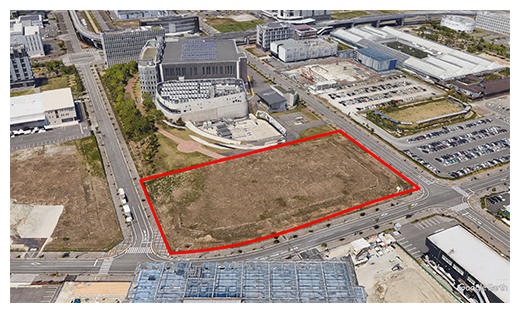Nvidia GPUs and Fujitsu Arm CPUs will power Japan's next $750M zetta-scale supercomputer — FugakuNEXT aims to revolutionize AI-driven science and global research
Nvidia and AI are synonymous.

Japan is preparing to reclaim its position at the forefront of high-performance computing with FugakuNEXT, a hybrid AI-HPC supercomputer designed to surpass exascale and venture into uncharted zetta-scale territory. Announced at a ceremony in Tokyo on August 22, the project marks a major collaboration between RIKEN, Fujitsu, and, for the first time, Nvidia, bringing together Japan’s sovereign infrastructure and U.S. GPU technology in a system built for the next decade of scientific and industrial challenges.
Fugaku, installed in 2020, held the world’s top spot for two years and played a crucial role during the COVID-19 pandemic, where its simulations helped guide research and response efforts. Today, it still ranks seventh globally, but Japan is already looking ahead. FugakuNEXT is expected to come online around 2030 at RIKEN’s Kobe campus on Port Island, with a development budget exceeding 110 billion Yen ($740 million USD). This marks the latest in a lineage of Japanese flagship supercomputers—from the Earth Simulator in 2002 to the K computer in 2011 and Fugaku itself—each of which once held the crown for computational speed.
Unlike its predecessors, FugakuNEXT will integrate GPUs as a central design element. Fujitsu will develop the new MONAKA-X CPUs, while Nvidia will supply GPUs and co-design the interconnect fabric through NVLink Fusion, a high-bandwidth bridge between CPU and GPU. The result will be a system purpose-built for both traditional simulation workloads and next-generation AI applications. RIKEN has emphasized that this is Japan’s first flagship system to adopt GPUs, reflecting the growing global trend of unifying HPC and AI computing.

RIKEN has set quite ambitious goals for FugakuNEXT, projecting a fivefold increase in hardware performance over the original Fugaku, combined with a twentyfold software and algorithmic improvements through optimizations such as mixed-precision computing and physics-informed neural networks. Together, these advances are expected to deliver a massive hundredfold increase in real-world application performance compared to today’s machines.
Early targets already place the system’s peak at around 600 exaFLOPS in FP8 sparse precision, with the potential to become the world’s first zetta-scale supercomputer. Crucially, RIKEN has also confirmed that this leap in performance will be achieved within the same forty-megawatt power envelope as Fugaku, underscoring energy efficiency as a core principle of the project.
The institution also frames FugakuNEXT not just as a technical upgrade but as an integrated AI-HPC platform and a model for “AI for Science.” By automating various aspects of the research process—from hypothesis generation to experiment simulation and validation—the machine aims to accelerate discovery across diverse fields, including climate modeling, drug development, disaster resilience, and advanced manufacturing.
More importantly, Nvidia will serve a crucial role as its full software stack will be integrated into the supercomputer, from CUDA-X libraries for quantum simulation and data science to TensorRT for inference and NeMo for large language model training, reflecting the growing role of AI as a scientific instrument.
Get Tom's Hardware's best news and in-depth reviews, straight to your inbox.

For Japan, FugakuNEXT is both a scientific tool and a strategic investment. The government views the project as essential to strengthening domestic semiconductor technologies while positioning Japan as a global leader in AI and HPC innovation. At the launch ceremony, Satoshi Matsuoka, director of RIKEN’s Center for Computational Science, called the partnership with Nvidia “a major strategic move” that would not only enhance Japan’s capabilities but also promote the global adoption of Japanese CPU technologies.
That being said, the Green Team doesn't come cheap as FugakuNEXT is projected to cost more than three-quarters of a billion dollars, but its ambitions are even larger: pioneer the integration of HPC and AI at unprecedented scale; serve as a national platform for research and industry, and to establish Japan as a central force in the zetta-scale era. If successful, it will not just succeed Fugaku—it could redefine the very role of national supercomputers in shaping both science and society.
Follow Tom's Hardware on Google News to get our up-to-date news, analysis, and reviews in your feeds. Make sure to click the Follow button.

Hassam Nasir is a die-hard hardware enthusiast with years of experience as a tech editor and writer, focusing on detailed CPU comparisons and general hardware news. When he’s not working, you’ll find him bending tubes for his ever-evolving custom water-loop gaming rig or benchmarking the latest CPUs and GPUs just for fun.
-
jackt Then they ask why they dont shutdown nuclear plants, and replace with renewable... thats the answer...Reply -
derekullo Reply
Nuclear isn't always the right answer.jackt said:Then they ask why they dont shutdown nuclear plants, and replace with renewable... thats the answer...
If your town has ample sunlight hours and or wind speed and doesn't need a gigawatt of capacity then solar and wind are viable and won't have the huge cost associated with a nuclear power plant.
Please forgive Japan for being more hesitant than most countries with dealing with nuclear power/anything! -
micheal_15 remember Fujitsu deliberately LIED about the UK Post office Horizon system. vast numbers of people were accused and lost their businesses and homes.Reply
One guy was so ruined he killed himself. HUNDREDS went to prison and were made bankrupt.
Fujitsu built backdoors INTO the software so their own employees could basically steal money from THOUSANDS of post offices, commit money laundering offences etc.
Fujitsu in 2025 described those seeking compensation as "money hungry parasites"
Fujitsu STILL hasn't accepted the blame for their broke ass software to this day, and you wanna trust them to build a reliable CPU and accept if it has problems/bugs/crashes etc?
Not to mention the extremely high probability they'll have microcode malware to install software and steal your data/bank logins etc. All things they've done previously. -
jackt Reply
My comment was pro renewable.derekullo said:Nuclear isn't always the right answer.
If your town has ample sunlight hours and or wind speed and doesn't need a gigawatt of capacity then solar and wind are viable and won't have the huge cost associated with a nuclear power plant.
Please forgive Japan for being more hesitant than most countries with dealing with nuclear power/anything!
Japan should shut down all nuclear plants after Fukushima and the recent release of radioactive water in the sea (in addiction to the common reasons why all the countries should).
And datacenters should make theyr renewable power.
Instead those datacenters makes the electriytiy more expensive, and sometime they ask to build new nuclear plants, and evaporate the water!
The tech giants are corrupting all the govs in the world, they are dangerous.